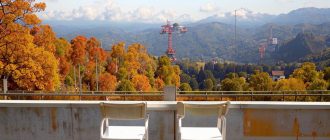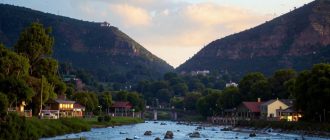
President of Pro-Vision, author of the Vinogradov.story community
“Every country is unique in its own way, but Uzbekistan stands out even against the background of other Central Asian states. It’s all about history: unlike most of our neighbors, Uzbek ancestors did not nomadically seek fertile places, but built their cities for centuries, concentrating cultural and religious life in them. This heritage is most strongly felt in the Silk Road cities of Samarkand, Bukhara and Khiva, where many places literally breathe with antiquity. If you want to see them with your own eyes, now is the time: it is not so hot, fruits are ripe, and there are fewer tourists because of the business season. And I will tell you about the sights worth visiting.
Samarkand is the oldest metropolis on the planet
The city, which is over 2,500 years old, impresses from the first minute you see it. Minarets bursting into the sky, intricate national ornaments on the walls, an abundance of bright majolica and noisy bazaars – it seems that this is not a real city, but a set for the screen version of an oriental fairy tale. Eyes naturally run wild, but it’s better not to hurry and explore everything in order.
I recommend you to start with Registan Square. This is the most grandiose attraction of Samarkand, where most of the historical buildings are concentrated. As if in contrast to the Uzbek dusty-yellow steppes and deserts, the facades of buildings here are splashed with bright colors. Blue and gold dominate the ornaments, and the spectacular turquoise dome seems to appear in a good half of the guest selfies. Interestingly, there is a lot of information encoded in the patterns on the walls. Looking at the ornamentation on the facade of Sherdor Madrasah, for example, one can see the image of a leopard – the same as on a 200 sum bill. Sometimes decorative elements also contain references to the names of the authors (it was forbidden to indicate initials directly, but a creative person will always find a way out). Inside, too, a lot of interesting things await. Some ancient buildings are functioning museums, others are souvenir shops. A good variant of a gift is a tablet written in Arabic script with a name or a wish for relatives or friends.
The next point on the map is the Gur-Emir Mausoleum, the tomb of the legendary Tamerlane, who is called Amir Temur in the East. The construction of the building began in 1403 and continued for several years, and each time the project became more and more extensive. Just for understanding: a huge mosaic dome, as well as the walls lined with marble and trimmed with gold seemed to Tamerlan (and the construction of the mausoleum began during his lifetime) not impressive enough, so the structure was dismantled, and in its place began construction of a new, even more grandiose monument.
The Bibi-Khanum Mosque, named in honor of Tamerlane ‘s wife and holding the status of the largest mosque in Central Asia, is a match for it. The huge complex, united in a single composition by a covered gallery with 480 marble columns, occupies an area of 18,000 square meters. meters. meters. Passing through the peshtak – the main entrance portal, 33.15 meters high and 46 meters wide – you feel like a grain of sand. At the same time, the buildings do not press on a person – the creators did not spare on the finest floral, geometric and epigraphic ornaments and other decorative elements, which decorate the buildings in large quantities. It is immediately obvious that the complex was dedicated to a woman!
Not far from Bibi-Khanum Mosque, on the slope of Afrosiab, there is another monumental construction – necropolis Shahi-Zinda, or street-cemetery, as locals call it. The complex consists of 11 mausoleums, where the ashes of the highest nobility of Samarkand rest. The first burials supposedly date back to the XI-XII centuries, and, as in the case of Tamerlane’s mausoleum, each subsequent building tries to outdo the previous one in its splendor. As a result, Shahi-Zinda is not only considered one of the most striking sights of Samarkand, but is also included in the UNESCO World Heritage List.
Bukhara is a temple city where simple human joys are not forgotten
Like Samarkand, Bukhara also boasts an abundance of religious and cultural monuments, but here everything is somehow calmer and… cozier.
If the center of Samarkand welcomes guests with a huge stone square, then in the heart of Bukhara a water body sparkles serenely. The ensemble of Lyabi-house (literally – “the bank of the pool”) includes a large man-made pond, madrasah and khanaka of Nadir Divan-Begi (1622), as well as madrasah Kukeldash (1568). The buildings are definitely of interest, but one goes to Lyabi House primarily to relax. I feel that in the evening the whole city gathers here. The atmosphere is as inviting as possible: numerous cafes with music and laughter, ice cream stands, beautiful lighting. And all this – in an inexpressible oriental atmosphere.
From Lyabi House to Miri-Arab Madrasah there is a string of shopping domes. I strongly advise you to take a walk, especially if you want to take home the products of local craftsmen. For carpets, beautifully patterned shawls or cuts of Bukhara cloth it is better to go to the shops hidden inside the Tim Abdullahan dome, and for jewelry and traditional home accessories – in the Toki Zargaron dome. However, the four surviving domes are all next to each other, so it’s easy to get around them all.
Connoisseurs of ancient architecture, in turn, should like the Ark Fortress, which is the oldest monument of the city. Documentarily it existed in the V century, but archaeologists call even earlier dates – up to the IV century BC, when the first defensive structures were erected on this site. Over time, the fortress turned into a real citadel with a mosque, palace, mint, library, hotels, prison, bathhouse and other buildings. Not all of them have survived to our days, but it was possible to preserve quite a lot of them.
Khiva – an open-air museum
Khiva is an amazing city. I began to suspect about it even before I got acquainted with it, when I was traveling by car through the Kyzylkum desert. The road could not be called short, besides, on the way we got into a dust storm. “What was it like for people before, when there were no cars and trains?” – I thought. As I learned later, the conquerors of the past did not spare Khiva their attention either. Those brave men who were not afraid of distance and bad weather did not even have to organize a siege – the inhabitants of Khiva themselves opened the gates to uninvited guests. No one was afraid of the consequences: anyway, most of the strangers who occupied the city left after a month because they could not withstand the local hot and dusty climate.
Over the past centuries, the sun over Khiva has not become friendlier, but it is still worth getting there. The old city – Ichan-Kala – is like a jewelry box, where all the riches are literally crowded inside the fortress walls. In fact, Khiva is an open-air museum, where nevertheless people continue to live: the smell of fried meat comes from the courtyards, and children run along the streets. Also in Khiva you can climb to the top of the minaret and look at the surroundings from the top. The views from there are definitely worth the two hundred steps.






